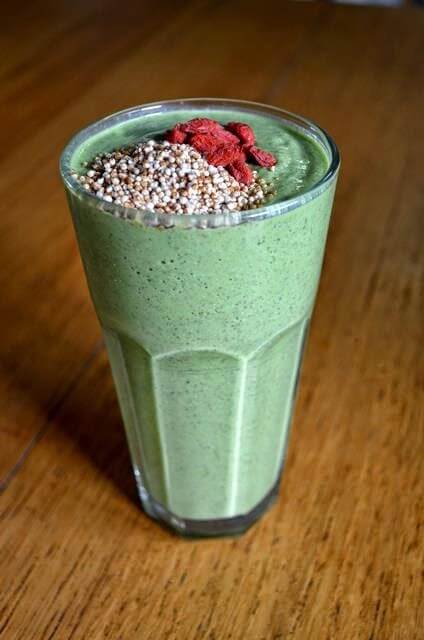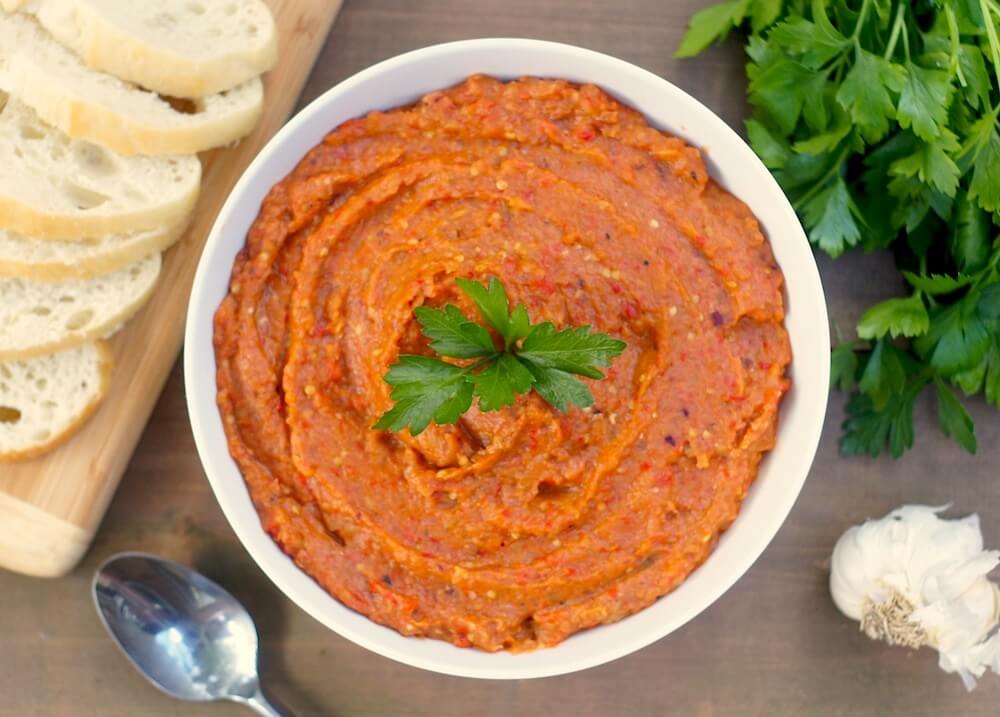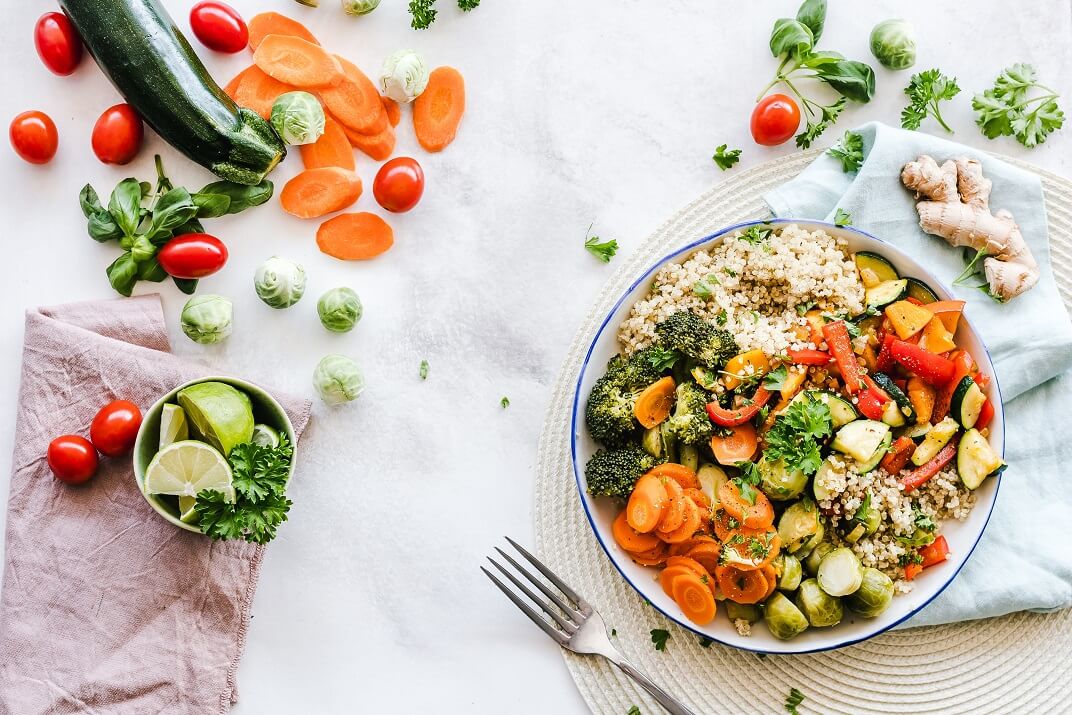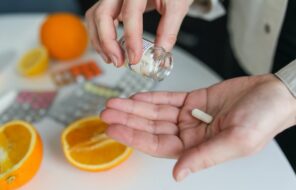A consistent skincare routine is critical for achieving a healthy, glowing complexion. Yet, it’s not the only factor at play. The reality is that good skin — much like healthy hair — starts from the inside. There aren’t enough topical products in the world that can compensate for a poor diet, extreme stress, or other behavioral habits that can derail even the best skincare intentions.
Achieving a flawless complexion starts with a healthy diet. Reducing your intake of processed foods, being mindful of what you eat and drink, and prioritizing nutrition are all critical to experiencing a natural glow and supple skin. If you’re concerned that your dietary habits might be at the root of your skincare woes, here are a few simple recipes that can bring out the best in your visage.
Antioxidant-rich smoothies

Smoothies can be an easy way to incorporate more healthy foods into your diet without feeling like you’re spending all day chowing down on the green stuff. Try creating a kale, apple, avocado, and goji berry smoothie. Kale is rich in vitamin K, which helps to control inflammation that can be caused by acne.
Meanwhile, goji berries and apples are packed with antioxidants which help to prevent premature aging. The nice thing about smoothies is that you can add as much or as little of an ingredient as you like or include yogurt to give your skin a probiotic boost. Combine these ingredients in a blender and enjoy. If the recipe is a tad too tangy for your tastes, add a bit of honey for a natural sweetener. (Did you know honey actually has skin benefits?)
Try this recipe:
- Chop and combine 1 green apple and 1/2 a small avocado in a blender.
- Add 2 beetroot leaves, 2-3 three kale leaves, and a 2-inch chunk of cucumber.
- Add ice cubes and ground cinnamon to taste.
- Add your choice of milk or opt for water.
- Blend it altogether.
- Top with a crunchy food like oats or dried berries (optional).
Omega-3-infused seafood salads
Usually when people hear about omega-3 fatty acids, it’s within the context of heart health. However, the super nutrient that’s abundantly found in fatty fish like tuna and salmon is also linked with regulating oil production in the skin. Additionally, it’s been proven to support more balanced skin hydration. The benefits don’t stop there. Omega-3s are proven to reduce the skin’s sensitivity to UV rays and can even help sun exposure-related skin rashes clear up faster.
Translate that to a healthier diet by topping a green salad with your preferred fatty fish, such as salmon, mackerel, or tuna. If you’re vegan or vegetarian, swap out the fatty fish for a winter squash soup since the gourd is brimming with 203 mg of omega-3s. Alternatively, you can have a kale greens salad and skip the fish, as even just 1 cup of raw kale contains 121 mg of omega-3s.
Try this recipe:
- Season salmon filets with cumin, chili powder, and salt before placing on a hot grill. Sear briefly for a few minutes on each side.
- In a separate bowl, combine chopped avocado, cucumber, scallions, and cilantro. Include lime zest and mix with lime juice and olive or avocado oil. Season to taste with salt and pepper.
- Add dressing to the cucumber-avocado salad (optional).
- Plate the salad topped with the salmon and enjoy!
Vitamin-rich dinner bowls
Yes, quinoa is a trendy grain these days, but it’s also a nutrient-dense option. Multiply its body benefits by pairing it with avocado and spinach. While spinach is another vitamin K-rich leafy green, avocado is linked with controlling skin damage caused by UV ray exposure and being high in protein and vitamins C and E.
Vitamin C helps the body produce more collagen while, vitamin E is linked with better hydration. Note that avocados are also believed to improve your skin’s elasticity while reducing breakouts. Make it a salad by combining quinoa with avocado, spinach, and sesame seeds for texture. Add a splash of lemon or a light vinaigrette dressing.
Try this recipe:
- Rinse and cook the quinoa.
- While the quinoa is cooking, mince garlic and rough chop spinach.
- Cut cherry tomatoes, slice green onions, and dice avocados.
- Once the quinoa is cooked, combine it in a large bowl with the spinach and garlic, then toss to mix thoroughly.
- Mix in tomatoes, green onions, and 2.5 tablespoons of red wine vinegar, and season with salt to taste.
- Add avocado and mix.
- Combine cucumber, fresh herbs, lemon juice, or Dijon mustard (optional).
- Serve immediately while warm or refrigerate to intensify the flavors.
Nutritional dips and spreads

If you’re ready to up the ante on your dips and spreads and improve your skin’s health, there’s a roasted eggplant, red pepper, and garlic recipe with your name on it. All three of these ingredients are loaded with essential nutrients that translate to better skin.
Most people know that garlic is good for your heart, but it’s also known to reverse skin diseases and dandruff. Eggplant is rich in nasunin, an antioxidant that prevents cell membrane damage. Finally, red pepper contains high levels of vitamin C to protect your skin against premature signs of aging.
Try this recipe:
- Cut onion, eggplant, and red pepper into 1-inch pieces and toss in olive oil, salt. Season with pepper to taste.
- Spread the seasoned veggies on a baking sheet and roast in an oven for 45 minutes at 400 degrees Fahrenheit — or until soft and lightly browned.
- Allow the veggies to cool, then place in a food processor or blender with tomato paste.
- Blend until chunky or to your preferred consistency.
Whole foods over supplements
Can you opt for supplements over dietary choices? Sure. However, research usually falls on the side of whole foods to boost nutritional needs rather than reaching for a pill, gummy, or drops. For most people, unless you have a known vitamin deficiency, you should stick to whole foods to boost your nutritional intake.
Better skin one meal at a time
Improving the health, look, and feel of your skin will take time — especially when targeting foods as a means of doing so. However, the holistic benefits to your overall health can’t be overstated. If you’re tired of your skin not looking its best, consider objectively reviewing your food consumption and adjusting your diet accordingly.
It’s always best to speak with a doctor or medical professional before altering your diet.





